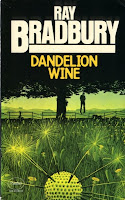Long out of print, early editions of his books have become highly collectible and sought out by art enthusiasts and practitioners but last year Titan Books began re-publishing facsimile hardback editions of the illustrator's guides.
A fourth – perhaps his best known work, Creative Illustration – is due for release in October.
Figure Drawing for All it's Worth
Drawing the Head and Hands
In May, Titan published Successful Drawing
In October, Titan will publish the fourth facsimile in the series – Creative Illustration, considered Loomis’s magnum opus, which is aimed primarily at the professional-level illustrator.
It’s divided into seven sections: Line, Tone, Colour, Telling the Story, Creating Ideas, Fields of Illustration, and Experimenting and Studies. The book is filled with instructions, tips, insider experiences, and incredible illustrations and definitely one for artists' wish lists, and a title I've often suggested as a resource elesewhere on downthetubes.
Born in 1892, after studying art, Loomis moved to Chicago where he eventually opened his own studio – working in editorial and advertising for most of the top clients of the time, including Kellogg’s, Coca Cola, Lucky Strike and many others. He also became renowned as an art teacher and his instructional books on illustration and art - which also include Fun with a Pencil and The Eye of a Painter - are acclaimed classics in the field.
As well as Alex Ross, Dick Giordano, and Steve Lieber, among others, have cited the influence of Loomis on their style and studies. Steve Rude named one of the characters he drew in the Nexus comic book General Loomis.
• Andrew Loomis: Wikipedia Entry










